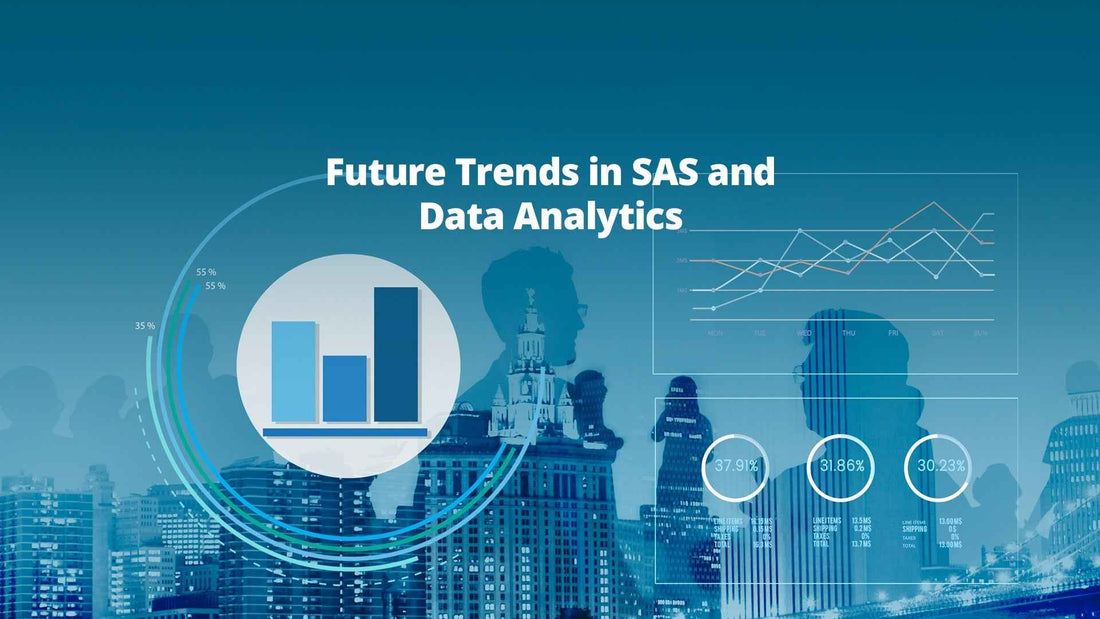
Future Trends in SAS and Data Analytics
Introduction
The field of data analytics is continuously evolving, and SAS (Statistical Analysis System) remains a cornerstone tool for data scientists and analysts. As businesses increasingly rely on data-driven decision-making, understanding the emerging trends and future developments in SAS and data analytics becomes essential. This blog explores the future landscape of SAS and data analytics, highlighting key trends and predictions that will shape the industry.
- Increased Integration with AI and Machine Learning
One of the most significant trends in data analytics is the integration of AI and machine learning. SAS is at the forefront of this evolution, embedding advanced AI and machine learning capabilities into its platform. This integration allows users to develop sophisticated predictive models and automate complex analytical tasks, thereby enhancing decision-making processes.
Future Outlook: We can expect SAS to continue enhancing its AI and machine learning functionalities, making it easier for users to implement these technologies without needing extensive programming knowledge. Automated machine learning (AutoML) features will become more prevalent, enabling users to build and deploy models faster and more efficiently.
- Expansion of Cloud-Based Analytics
The shift towards cloud computing has revolutionized data analytics, offering scalable and flexible solutions for businesses of all sizes. SAS Viya, the cloud-native analytics platform, exemplifies this trend by providing robust analytics capabilities in a cloud environment.
Future Outlook: The adoption of cloud-based analytics will accelerate, with SAS continuing to innovate in this space. We can anticipate more seamless integration with major cloud providers like AWS, Azure, and Google Cloud, making it easier for organizations to leverage SAS analytics in a scalable and cost-effective manner.
- Emphasis on Real-Time Analytics
Real-time analytics is becoming increasingly crucial as businesses seek to make timely and informed decisions. SAS's capabilities in real-time data processing and analysis are evolving to meet this demand.
Future Outlook: The demand for real-time analytics will grow, and SAS will likely enhance its real-time data processing capabilities. This includes improvements in streaming analytics, enabling organizations to gain immediate insights from their data and respond swiftly to changing conditions.
- Enhanced Data Visualization and Reporting
Effective data visualization and reporting are essential for communicating insights and driving action. SAS has long been known for its powerful visualization tools, and this area will continue to see significant advancements.
Future Outlook: Expect more sophisticated and interactive visualization options within SAS, leveraging technologies like augmented reality (AR) and virtual reality (VR). Enhanced reporting features will allow users to create more compelling and informative dashboards, facilitating better data-driven decision-making.
- Greater Focus on Data Governance and Security
With the increasing volume and complexity of data, robust data governance and security measures are paramount. SAS provides comprehensive data management solutions to ensure data integrity, privacy, and compliance.
Future Outlook: The focus on data governance and security will intensify, particularly with evolving regulations like GDPR and CCPA. SAS will continue to enhance its data governance frameworks, providing users with more advanced tools for data quality, privacy, and compliance management.
- Advancements in Natural Language Processing (NLP)
Natural Language Processing (NLP) is transforming how we interact with data, enabling more intuitive and accessible analytics. SAS is integrating NLP capabilities to allow users to query and analyze data using natural language.
Future Outlook: NLP will become more sophisticated, enabling users to perform complex analyses through simple, conversational interactions with their data. This will democratize data analytics, making it more accessible to non-technical users and fostering a data-driven culture across organizations.
- Growth of Edge Analytics
Edge analytics involves processing data at the source, reducing latency and bandwidth usage. SAS is exploring edge analytics to provide real-time insights from IoT devices and other edge computing environments.
Future Outlook: The proliferation of IoT devices and the need for real-time insights will drive the growth of edge analytics. SAS will expand its capabilities in this area, enabling organizations to analyze data closer to its source and make faster, more informed decisions.
Conclusion
The future of SAS and data analytics is bright, with numerous exciting trends and developments on the horizon. From AI integration and cloud-based analytics to real-time processing and enhanced data visualization, SAS is poised to remain a leader in the data analytics landscape. By staying ahead of these trends, organizations can leverage SAS to gain deeper insights, drive innovation, and maintain a competitive edge in their respective industries.
